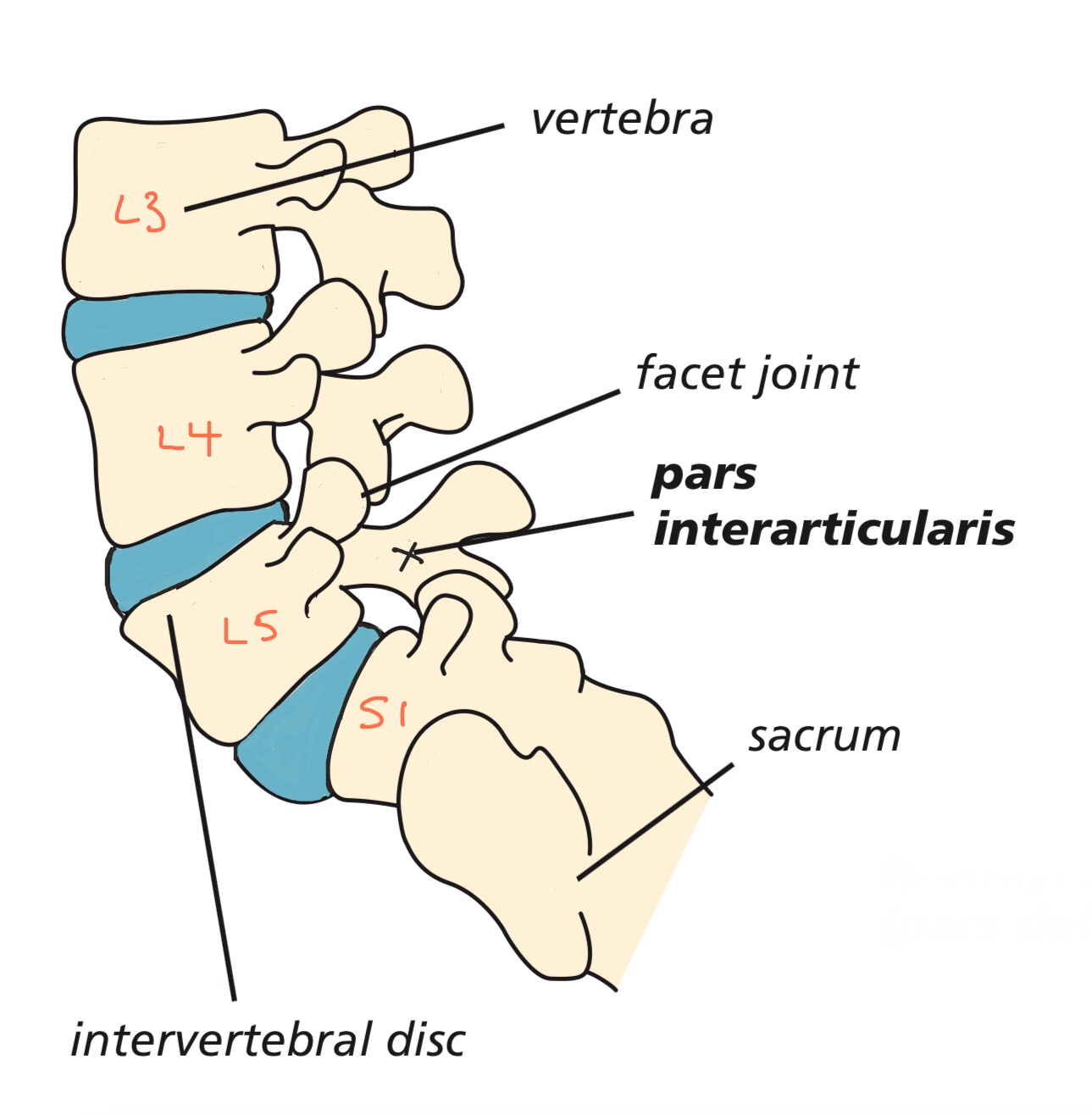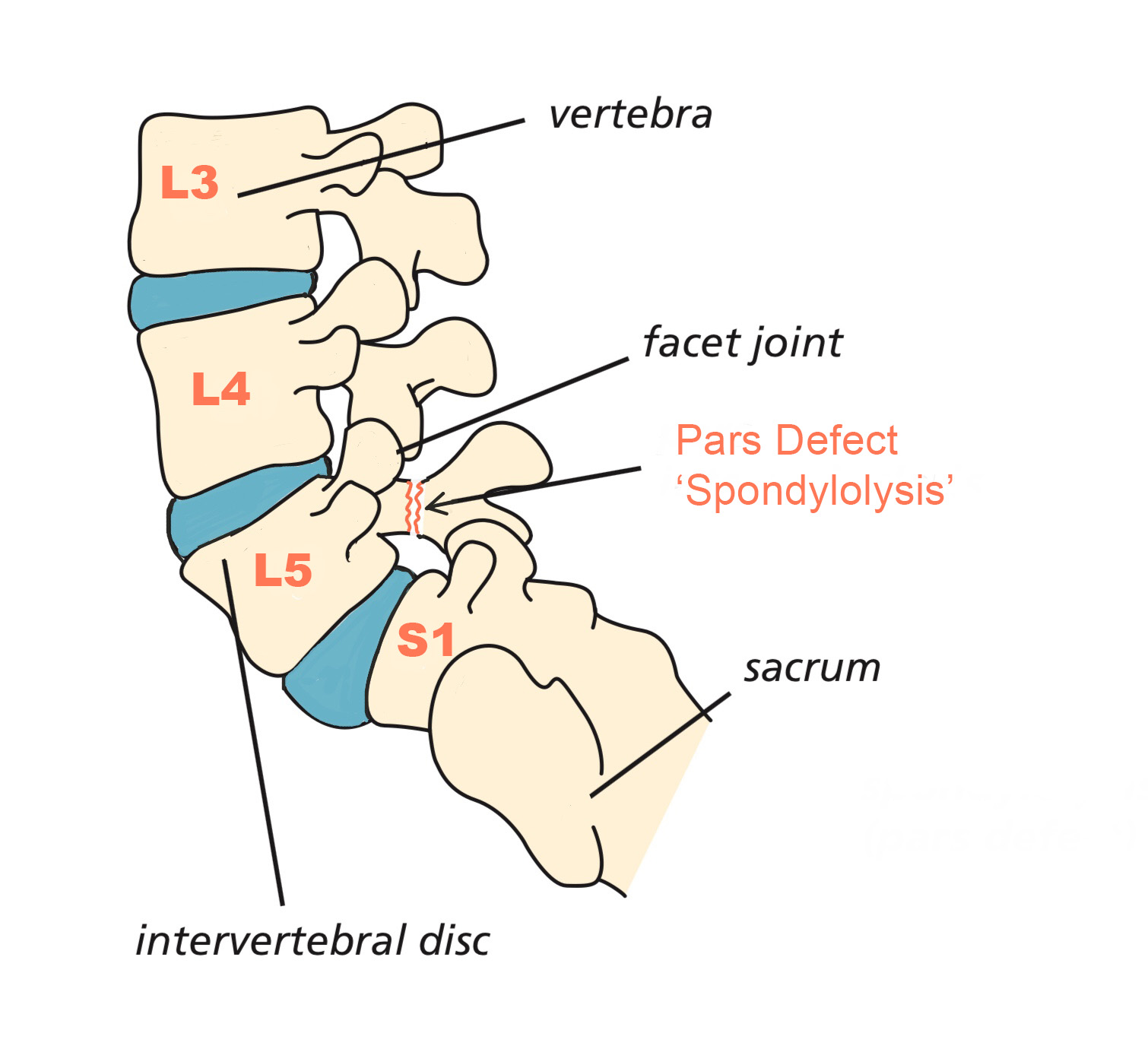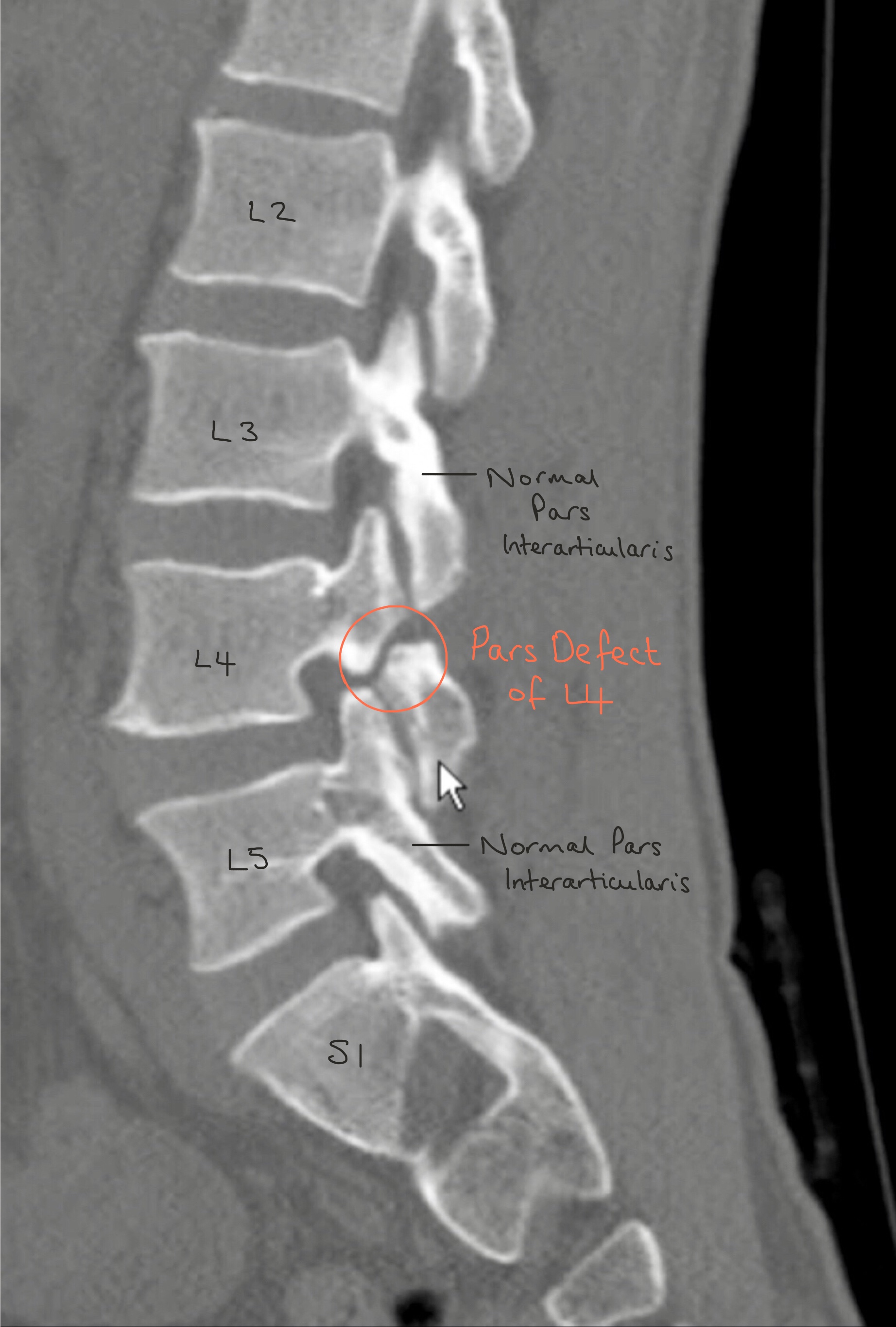What is a Pars Defect?
The ‘pars’, which is actually called the ‘pars interarticularis’, is a small length of bone that joins the facet joints of one vertebra to the facet joints of the vertebra below it. There is a pars interarticularis on each side of the vertebrae at the back of the spine.
A pars defect is a small break or fracture in the bone that connects the facet joints and they can become separated which is also called “Spondylolysis”.
About 80% of pars defects occur on both sides of the vertebra (bilateral) however they can also happen on only one side (unilateral).
More than 85% of pars defects are found in the L5 vertebrae, with about 10% occurring in the L4 and to much lesser in the L3 and L2 vertebrae. They most commonly occur in children and adolescents especially in those that play lots of sports. After skeletal maturity, pars defects are most common in athletes.

What is the difference between Spondylolysis and Spondylolisthesis?
- ‘Spondylo’ means vertebra or spine.
- “Lysis” means fracture or break.
- “Listhesis” means slippage
Therefore, spondylolysis refers to the separation of the pars interarticularis caused by a fracture/break whereas spondylolisthesis refers to the slippping of one vertebra over another. This happens if the stress fracture weakens the bone so much that it is unable to maintain its correct position and the vertebra can start to slip out of place.
What are the causes of a Pars Defect?
- Sports: Certain sports can can cause a pars defect by causing repetitive stress on the vertebra by constantly over stretching it on one or both sides. Typical sports are: Gymnastics, ballet dancers, rowers, weight lifting, fast bowlers in cricket, field athletics, rugby players and tennis players.
- Genetics: Some people are born with a thinner pars interarticularis bone than other people and therefore are more prone to fractures.


CT scan shows a pars defect at L4 (circled).
Symptoms of a Pars Defect:
- Usually no symptoms/painfree
- Dull, low back pain which is usually on both sides and is worst during and after excercise (especially excercise or sport that involves hyperextension) and it usually goes away with rest (or not doing the particular exercise).
- Buttock pain – not always present.
- Stiffness in the low back and tightness in the hamstring muscles
If the pars defect has resulted in a Spondylolisthesis and there is spinal nerve irritation, then you may also have pain or altered sensations in your legs.
If you experience the symptoms of Cauda Equina Syndrome, which include loss of sensation of your bowel, bladder or sexual function, you must seek urgent medical attention or go to A&E.
Diagnosis
Mr Hilton always takes a detailed history and performs a neurological examination as the first part of any diagnosis process.
Imaging is used usually to confirm, or exclude, a diagnosis and this is generally in the form of standing X-rays, MRI and in the case of a pars defect, a CT scan is often performed.
MRI scans are very good at showing the earliest signs of stress within the pars interarticularis and the adjacent pedicle and it can show if the fracture is new.
However, CT scans are the investigation of choice to assess whether the pars fracture is new, if it is in the healing stage or if there is a ‘non-union’. Non-union means the fracture is old and it has not healed.
Treatment
Treatment varies depending on the severity of the symptoms, how it is affecting your life and how long you have been experiencing the symptoms.
1. Most patients only require conservative management:
Conservative management means non-surgical treatment and this includes:
- Physiotherapy
- Pain killers
- Lifestyle changes like avoiding weight lifting, avoiding sports that involve repetitive hyperextension actions (leaning too far backwards) and avoiding contact sports.
- Weight loss; being overweight increases the load and pressure on the spine and therefore it is likely to increase the symptoms experienced and therefore losing weight can help significantly.
2. Pars Injection:
If your symptoms persist after conservative management or are severe, a pars injection maybe considered for both treatment and diagnostic purposes. Mr Hilton performs all pars injections in theatre under X-ray guidance. You may choose whether you want it under local anaesthetic or sedation.
The pars defect or stress fracture is injected with local anaesthetic and a steroid. The local anaesthetic will reduce pain in the for 4 – 6 hours and is used to confirm, or exclude, whether the pain is originating from the pars defect.
The steroid part of the injection reduces the inflammation in the surrounding area which can reduce pain and other symptoms caused by inflammation such as nerve irritation.
For some patients, the pain relief can be long-lasting. Although it can be disappointing if the pain relief is only short-lived or there is no pain relief at all (not even for the intial 4 – 6 hours) this is a very important part of the diagnosis
3. Pars Repair:
A pars defect repair is in the form of an instrumented fusion.


